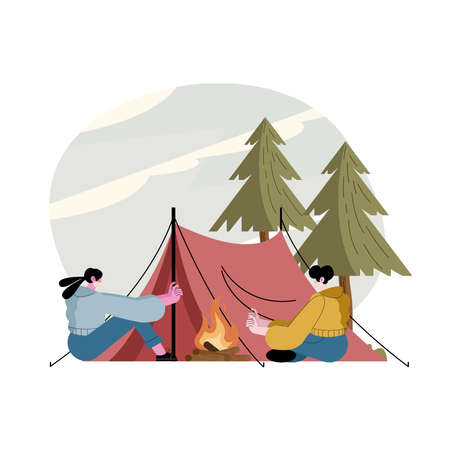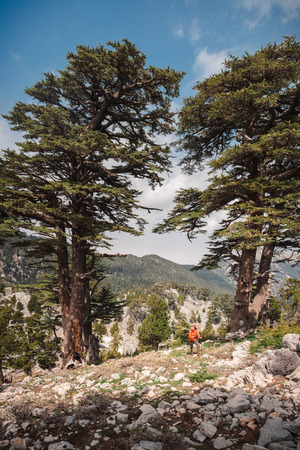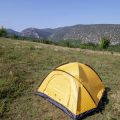1. Understanding the Difference Between State and National Parks
When youre planning your first camping trip, one of the biggest questions is whether to head to a state park or a national park. Both offer incredible outdoor experiences, but they’re managed differently and cater to different types of visitors. Let’s break down the main differences so you can decide which is the right starting point for you.
Management and Oversight
National parks are managed by the National Park Service (NPS), a federal agency under the U.S. Department of the Interior. These parks are protected at the national level and often have stricter regulations to preserve their natural beauty.
State parks, on the other hand, are managed by individual state governments. Each state has its own department or agency that oversees its parks, which means rules and facilities can vary widely from one state to another.
Size and Scope
Generally, national parks cover much larger areas than state parks. They often include vast wilderness, iconic landscapes, and unique ecosystems. State parks tend to be smaller and more localized, making them easier to access for short weekend trips.
Quick Comparison:
| Feature | National Parks | State Parks |
|---|---|---|
| Managed By | Federal Government (NPS) | State Government |
| Typical Size | Larger – hundreds of thousands of acres | Smaller – more localized areas |
| Funding Source | Federal funds + visitor fees | State funds + visitor fees |
| Main Purpose | Preservation of natural and cultural resources on a national scale | Recreation and conservation within state boundaries |
Accessibility and Amenities
If youre new to camping, youll likely appreciate how accessible state parks are. Many are close to cities or towns, have well-maintained campgrounds, and offer amenities like restrooms, showers, picnic areas, and even electric hookups.
National parks often provide a more rugged experience. While some have excellent visitor centers and developed campgrounds, others may require advanced reservations or longer travel times due to their remote locations.
Crowds and Reservations
Because of their fame, national parks can get crowded—especially in peak season. Places like Yellowstone or Yosemite might require booking campsites months in advance. State parks are usually less crowded and easier to book on shorter notice, making them a great option for spontaneous getaways.
Tip for First-Timers:
If youre just dipping your toes into camping life, start with a local state park. Its low-pressure, easy to plan, and still gives you a great taste of the outdoors without needing expert-level prep.
2. Accessibility and Convenience for First-Time Campers
When youre just getting started with camping, convenience can make or break your experience. From how close the park is to your home, to how easy it is to book a site and find restrooms, every little detail matters. Lets take a look at how state parks and national parks compare when it comes to accessibility and beginner-friendly features.
Location Proximity
For most first-time campers, driving a few hours instead of taking a full-blown road trip makes a big difference. State parks usually win here—theyre often scattered across each state, making them easier to get to from cities and suburbs. National parks, on the other hand, tend to be located in more remote or mountainous areas, which could mean longer travel times.
| Park Type | Average Distance from Major Cities |
|---|---|
| State Parks | 30–100 miles |
| National Parks | 100–300+ miles |
Reservation Systems
Both state and national parks offer online reservation systems, but their ease of use can vary by location. National parks use Recreation.gov, which covers multiple federal sites and tends to book up fast—especially for popular destinations like Yosemite or Yellowstone. State parks typically have their own reservation platforms run by individual states (like ReserveCalifornia.com or FloridaStateParks.org), which may offer more availability for spontaneous trips.
Tips for First-Time Campers:
- Book early—up to 6 months in advance for popular spots
- Check cancellation policies before booking
- Look for “first-come, first-served” sites if youre flexible
Amenities and Facilities
This is where state parks often shine. Many state parks cater to local families and beginners with well-maintained restrooms, hot showers, picnic tables, fire rings, and even camp stores. National parks can vary widely—some have modern amenities near main visitor areas, while backcountry campsites may have no facilities at all.
| Amenity | State Parks | National Parks |
|---|---|---|
| Restrooms & Showers | Usually available | Varies by campground |
| Campsite Amenities (tables/fire pits) | Commonly included | Available in developed areas only |
| Campsite Store or Visitor Center Nearby | Often available | Limited depending on location |
Ease of Access Within the Park
If youre not ready for hiking miles with gear on your back, ease of access is key. Many state parks have drive-up campsites that are flat and close to parking areas. National parks might require a bit more effort—some campgrounds are farther from main roads or involve short hikes. For beginners, this can make setting up camp less stressful.
Good to Know:
- Check if the campsite has paved roads (great for RVs or car camping)
- Look for ADA-accessible sites if needed
- Avoid hike-in or backcountry sites until you gain more experience
For first-timers looking for an easy, comfortable introduction to camping, state parks often provide better accessibility and convenience. But if youre set on seeing iconic landscapes and don’t mind planning ahead, national parks can also be beginner-friendly—with a bit more preparation.

3. Cost and Permit Considerations
When youre just getting into camping, understanding the costs and permits involved can help you decide whether to start at a state park or a national park. Heres a breakdown of what to expect so you can plan your trip without any surprises.
Entrance Fees
One of the biggest differences between state parks and national parks is the entrance fee. State parks usually have lower fees, which makes them a budget-friendly option for first-time campers. National parks, on the other hand, often charge more due to their size, popularity, and maintenance needs.
| Park Type | Typical Entrance Fee (per vehicle) |
|---|---|
| State Parks | $5 – $15 |
| National Parks | $20 – $35 |
Camping Costs
Campsite fees vary widely depending on location, amenities, and season. However, state park campgrounds are generally more affordable than those in national parks. They often offer basic facilities like restrooms and picnic tables, while some national park sites may include fewer amenities but higher prices due to demand.
| Park Type | Tent Campsite (per night) |
|---|---|
| State Parks | $10 – $30 |
| National Parks | $20 – $50+ |
Permit Requirements
If youre planning on backcountry camping or hiking in certain areas, you might need a permit—especially in national parks. These permits help manage visitor numbers and protect natural resources. State parks may also require permits for specific activities like fishing or group camping, but theyre usually easier to obtain.
Typical Permits You Might Need:
- State Parks: Fishing license, group use permit, special activity permit (varies by state)
- National Parks: Backcountry camping permit, wilderness permit, special use permit for events or photography
A Few Tips:
- If youre on a tight budget or planning a spontaneous trip, state parks are often more flexible and affordable.
- If youre aiming to visit a famous landmark or hike iconic trails, be ready to pay more and book well in advance at national parks.
4. Types of Camping Experiences Offered
One of the biggest decisions first-time campers need to make is what kind of camping experience theyre looking for. Both state parks and national parks offer a variety of options, but the style and accessibility can differ quite a bit. From well-equipped campgrounds with modern facilities to remote backcountry sites, here’s what you can expect from each park system.
Developed Campgrounds
If youre new to camping, developed campgrounds are often the best starting point. These campgrounds usually include basic amenities like restrooms, picnic tables, fire rings, and sometimes even showers or electric hookups. Theyre great for car camping and are generally easier to reserve and access.
| Feature | State Parks | National Parks |
|---|---|---|
| Restrooms & Showers | Common in most campgrounds | Available in popular areas |
| Electric Hookups | More frequently available | Limited availability |
| Reservation System | Easier & more flexible | Highly competitive during peak season |
Semi-Primitive Sites
Semi-primitive sites are a step up in terms of rustic appeal. These might not have running water or flush toilets but still provide designated spots for tents and sometimes vault toilets. They offer a quieter, more natural experience without going fully off-grid.
What First-Timers Should Know:
- State Parks: Often located within hiking distance from parking lots, making them accessible yet secluded.
- National Parks: May require short hikes and are usually less crowded than developed campgrounds.
Backcountry Camping
This is for campers seeking solitude and adventure. Backcountry camping involves hiking into remote areas with all your gear—no restrooms, no electricity, just you and nature. It requires a permit in both systems and some level of planning and preparedness.
How They Compare:
| State Parks | National Parks | |
|---|---|---|
| Permit Required? | Sometimes | Usually required |
| Mileage to Site | Often shorter hikes (1–3 miles) | Can be long treks (5+ miles) |
| User Experience Level Needed | Beginner to intermediate | Intermediate to advanced |
Cabin & Yurt Rentals
If youre not quite ready to sleep in a tent, many state parks—and a few national parks—offer cabin or yurt rentals. These are perfect for families or campers who want the outdoor experience without giving up all their comforts.
- State Parks: More commonly offer cabins and yurts with heating, beds, and sometimes kitchens.
- National Parks: Limited options; mostly found in historic lodges or concessionaire-run areas.
No matter your comfort level or camping style, there’s likely a park—and an experience—that fits your needs. Understanding the types of camping offered can help make your first trip enjoyable and stress-free.
5. Wildlife, Scenery, and Recreational Opportunities
One of the biggest reasons people go camping—especially for the first time—is to connect with nature. Both state parks and national parks offer incredible natural beauty and plenty of outdoor activities, but they each have their own vibe and experiences to offer.
Wildlife Encounters
If seeing wildlife is high on your list, national parks often provide a better chance of spotting iconic animals like bison in Yellowstone or elk in Rocky Mountain National Park. These parks usually cover larger, more remote areas that support diverse ecosystems. State parks also offer great wildlife viewing, especially for more common animals like deer, raccoons, birds, and even the occasional black bear depending on the region.
Scenic Views
When it comes to jaw-dropping landscapes, national parks often take the spotlight. Think Grand Canyon’s vastness or Yosemite’s granite cliffs. However, don’t underestimate state parks—they can be just as scenic, offering waterfalls, beaches, lakes, and forests that are easier to access and less crowded.
Outdoor Activities
Both types of parks offer a range of recreational opportunities. Here’s a quick look at what you can typically do in each:
| Activity | State Parks | National Parks |
|---|---|---|
| Hiking | Well-marked trails; good for beginners | Extensive trail systems; may include backcountry hikes |
| Fishing | Lakes and rivers commonly stocked for fishing | Opportunities vary; permits often required |
| Kayaking/Canoeing | Accessible lakes and calm rivers | Larger water bodies; sometimes more remote |
| Biking | Designated bike trails or shared paths | Limited; not all national parks allow biking on trails |
| Swimming | Lakes and designated beach areas available | Some options in warmer-weather parks |
Tip for First-Time Campers:
If youre looking for a relaxed experience with easy access to nature-based activities like hiking and fishing, a state park might be your best bet. If youre ready to explore big landscapes and maybe tackle more rugged adventures, consider starting with a well-known national park that offers beginner-friendly facilities.
Bottom Line:
No matter where you start—state or national park—you’ll find unforgettable scenery and plenty of ways to enjoy the outdoors.
6. Which is Best for First-Time Campers?
If youre new to camping, choosing between a state park and a national park can feel overwhelming. Both offer amazing outdoor experiences, but they each have their own vibe, level of accessibility, and amenities that can make or break your first trip. Heres how to decide which one might be right for you based on safety, comfort level, and how deeply you want to dive into nature.
Safety and Accessibility
For first-time campers, safety and ease of access are top priorities. State parks tend to be closer to towns or cities, with well-maintained roads and clear signage. Theyre also typically staffed with rangers who are used to helping beginners. National parks, while safe, are often more remote and may require more planning to navigate.
Comparison Table: Safety & Accessibility
| Feature | State Parks | National Parks |
|---|---|---|
| Proximity to Cities | Usually nearby | Often remote |
| Emergency Services Access | Faster response times | May take longer due to distance |
| Trail Difficulty | Beginner-friendly options | Wide range, some very advanced |
| Navigation Ease | Well-marked trails and maps | Can be complex; research needed |
Comfort Level & Amenities
If youre not ready to rough it just yet, state parks usually offer more creature comforts. Many have campgrounds with flush toilets, showers, picnic tables, and even electrical hookups. National parks sometimes have these too—but in more limited numbers and often requiring reservations far in advance.
Amenities Comparison Table
| Amenity | State Parks | National Parks |
|---|---|---|
| Restrooms & Showers | Commonly available | Limited availability in some areas |
| Campsite Features (tables, fire rings) | Standard at most sites | Available but may vary by location |
| RV Hookups/Electricity | Often available at select sites | Seldom available; plan ahead if needed |
| Cell Service/Wi-Fi Access | More likely near populated areas | Sparse or nonexistent in many areas |
The Immersive Experience Factor
If youre after jaw-dropping scenery and iconic landscapes like the Grand Canyon or Yosemite Valley, national parks deliver big. But those epic views come with crowds and complex logistics. State parks offer a quieter, more laid-back vibe that still lets you connect with nature—perfect for easing into the camping lifestyle without feeling overwhelmed.
Bottom Line for Beginners:
- If you value comfort and convenience: Start with a state park.
- If youre ready for adventure and willing to plan ahead: A national park experience could be incredible—but maybe save it for your second or third trip.
The best choice really depends on your comfort level and what kind of experience you’re looking for. Either way, starting small and building confidence is the key to falling in love with camping.


